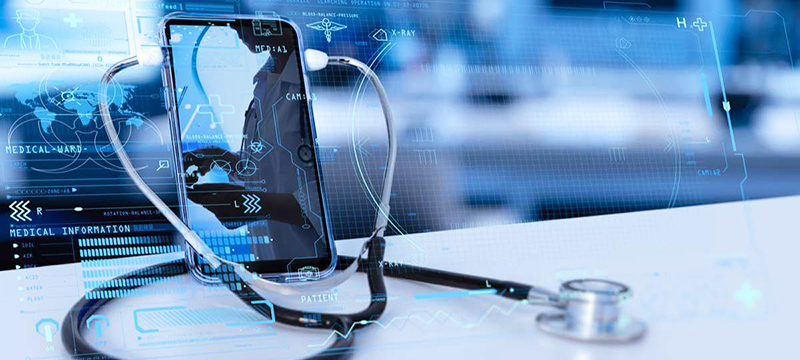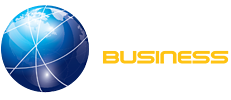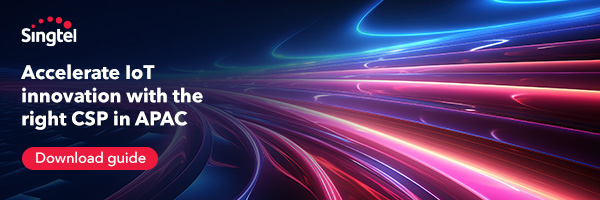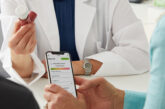
The pandemic pushed the digitization of the healthcare industry forward. IT technologies, such as healthcare IoT, have helped provide quality care in the comfort of one’s home and drive telehealth solutions’ popularity. Though the advances of IoT in healthcare are already significant, there is still room for growth. The IoT medical device market is expected to develop proactively and reach $94.2bn by 2026, according to MarketsandMarkets.
Although the prognosis is inspiring, IoT deployment could be a challenging endeavor. For healthcare providers, another digital tool means an additional investment. So what are the significant benefits of IoT that could justify it?
IoT for healthcare: why is it important?
In the healthcare industry, IoT powers the crucial aspects of hospital operation – remote patient monitoring and hospital management automation.
Remote patient monitoring
Remote patient monitoring (RPM) is a relatively new way of care delivery patients can get from where they are due to IoT medical devices connected to the Internet. Connected IoT devices collect patients’ vitals 24/7 and upload them to a cloud, EHR, or another secure data storage. Then, patients can share their records with doctors. Thanks to the availability of the patient’s health indicators over time, doctors can early detect general tendencies and alarming signs in the patient’s health parameters.
Smart hospital management
IoT in healthcare is not only about monitoring patients remotely. The technology also brings operational benefits to healthcare providers. For example, IoT-based technology enables automated inventory management. IoT- and RFID-powered tools help hospital staff keep track of drugs, medical products, equipment, and workflows, improving visibility and reducing expenses.
Healthcare IoT: top 3 benefits
We’ve selected the top three benefits that prove a hospital’s investments in IoT bring value.
Cost savings
Chronic condition patients require the most expensive treatment. As MDLinx reports, 90% of the hefty annual healthcare spending in the US goes for treating chronic patients or managing their conditions. Logically, care providers seek to lower the costs preventing relapses and improving the quality of life for those patients. This is where remote patient monitoring can help.
For example, Vheda Health, a chronic care company from Columbia, Maryland, created a digital chronic management platform that manages high-risk chronic conditions with the help of remote monitoring technologies. Patients received a care package based on their health condition, including a customized mobile device and remote monitoring device. This helps patients to monitor their health better, preventing additional hospital admissions and reducing healthcare expenses. As a result, in 2021, Vheda Health’s customers reduced their healthcare costs by over 41%.
Long-awaited offer for patients
Patients prefer to avoid visits to a clinic. First, it’s about the cost. Secondly, the American Journal of Managed Care researchers found that going to the provider’s premises takes at least 100 minutes. Meanwhile, the actual appointment covers only a fifth of that time. The rest goes for traveling to the location and waiting in line. As a result, the Medical Group Management Association reported that 49% of medical groups witnessed an increase in no-show rates in 2022. However, missing the due appointments may worsen patients’ health outcomes and quality of life.
Some healthcare providers opt for home care to spare patients the need to travel to the hospital, and IoT for healthcare can help here. Thus, UMass Memorial Hospital from Worcester, Massachusetts, partnered up with Current Health, a home-based care company. Current Health produces sensors and remote monitoring devices to ensure at-home care to chronic condition patients and those recovering from different physical traumas or surgeries.
Due to the cooperation with Current Health, the clinic managed to serve more patients outside of the hospital setting. The clinic set up an at-home care program and gave the interested patients armbands that measure their heart rate, skin temperature, and blood oxygen level. They also gave patients iPads for round-the-clock access to their assigned clinicians.
The new care delivery model was successful. The hospital provided home care to nine to twelve patients daily. As a result, the facility’s one-month readmission rate was reduced by 20-30%. Among other benefits are a lower rate of infections and deep vein thrombosis in the participants compared to inpatients.
Working with Current Health, UMass Memorial managed to improve care in the community. They also resolved the problem of the low bed capacity typical of Central Massachusetts clinics.
Improved visibility and workflows
As a part of hospital inventory management solutions, IoT tools offer hospital staff a range of features that help speed up some work processes and boost their effectiveness.
For example, medical IoT streamlines stock tracking and searching for drugs, products, and other medical goods. It enables a user to find the necessary item with just a click. Besides, users stay informed about the item’s status. Users can also activate alerts about item status updates.
Besides, users can check the history of operations on the items, the actors, and the updates they made. This feature gives the staff crystal-clear visibility of the item’s journey across the hospital and the clinicians responsible for the changes.
Inventory management solutions can also help clinicians modify established workflows. For instance, In Los Angeles, California, Adventist Health White Memorial clinic managed to accelerate the turnaround time in their operating room by about 25 minutes thanks to the radio frequency identification technology (RFID) employed. As a result, the team reduced patient wait time at all checkpoints, from registration to postoperative recovery.
Conclusions
Implementing specific IoT solutions in the healthcare industry provides benefits that help resolve critical challenges providers face daily. First, it’s about saving the funds that are always insufficient. For instance, remote patient monitoring fosters timely prevention of relapses and unplanned hospital stays, which are expensive for patients and healthcare providers. Such tools can also speed up the diagnostics and treatment of diverse diseases and injuries.
Secondly, IoT-driven patient monitoring tools power a care provision model patients enjoy the most – at-home care. Home-based care suits chronic condition patients, those recovering from contagious diseases and fractures, and those with difficulties traveling to the facility. At-home care improves patient outcomes and their experience. For providers, it offers better ways to manage their resources.
As a part of a hospital inventory management solution, healthcare IoT helps providers improve the visibility of their operations and streamline the established workflows. For example, clinicians and nurses can view who is responsible for a task, what they should do, when, and with who. Improved visibility can assist with rapid response to unexpected situations and successful crisis resolution.
All of the above justifies the investment in healthcare IoT solutions, as they help upscale hospital services and improve patient outcomes, experience, and satisfaction.







